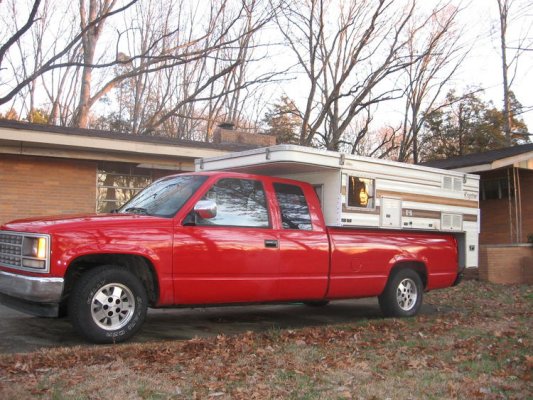Hello WTW forum. I posted once before looking for some advice on broken welds and I thought I'd update you with my progress. I'll start from the beginning. I was looking at a couple used Grandby's on Craigslist and my travels brought me close to this one, which I bought for $1500. It came with a 3-way Dometic fridge, sink, stove, and furnace -- all working when I got it.

Just picked it up
I didn't really look it over with a fine toothed comb -- I was running late and overall it looked okay, so I threw it on the truck and headed out. When I got it home I found dry rot where the fridge sits and broken welds, plus the previous owner had tried cutting the rear corner by the furnace -- I don't really know why. That prompted some repairs. I partially rebuilt the floor pack and Chicali made me a deal I couldn't refuse on the welding.

Broken weld

"Modified" rear corner -- prompted partial floor pack replacement
The project snowballed and the camper was stripped to the frame -- my wife wasn't happy. I also replaced the bed shelf, but Seven did such a good job on the description I don't think I need to go into any more detail.

Got this far, decided to go for it

Truck has a gooseneck hitch that sits proud of the bed. Cut a hole for it and laid another sheet of 5/8 on the floor (.578 to be exact - darn metric milled lumber...).
I've reached the max on pics, check the next post...

Just picked it up
I didn't really look it over with a fine toothed comb -- I was running late and overall it looked okay, so I threw it on the truck and headed out. When I got it home I found dry rot where the fridge sits and broken welds, plus the previous owner had tried cutting the rear corner by the furnace -- I don't really know why. That prompted some repairs. I partially rebuilt the floor pack and Chicali made me a deal I couldn't refuse on the welding.

Broken weld

"Modified" rear corner -- prompted partial floor pack replacement
The project snowballed and the camper was stripped to the frame -- my wife wasn't happy. I also replaced the bed shelf, but Seven did such a good job on the description I don't think I need to go into any more detail.

Got this far, decided to go for it

Truck has a gooseneck hitch that sits proud of the bed. Cut a hole for it and laid another sheet of 5/8 on the floor (.578 to be exact - darn metric milled lumber...).
I've reached the max on pics, check the next post...













